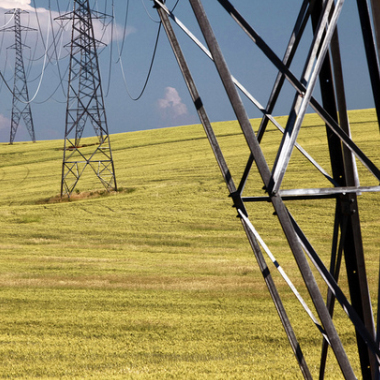

Electrical Engineering : What is Dirty Power?
Posted in Engineering, Fundamentals
“Dirty power” is an abnormality in the power quality that is being delivered to a system. These abnormalities can include low power factor, voltage variations, frequency variations, and surges. All electrical systems are based on a supply of power at a certain voltage and frequency. Equipment and electronic devices are chosen based on this expected supply of power.
When the power delivered to a system doesn’t match what is expected, equipment can malfunction, prematurely fail, or not work at all. In rare cases, power quality can be affected by the power company. The power company’s old infrastructure or inability to supply the high demand of its customers can decrease the quality of power. Most problems however, are caused by upstream systems (other customers) or the actual system itself (your site).
Upstream electrical systems can produce “dirty power” which then moves into power lines and the lower quality power will then be delivered to all downstream systems. An electrical system can actually lower its own power quality by connecting too many digital loads that dump higher frequencies into the system. In order to improve power quality, one must understand the causes and what can be done to resolve these problems.
There are several types of power disturbances falling under the name “dirty power” that can affect power quality:
- Low power factor is a low ratio of real power to apparent power. Low power factor is caused by inductive loads connected to a system.
- Normal mode noise (spike or surge) is a low level signal added to the original power signal. Normal mode noise can be caused by computers and switching power supplies.
- Common mode disturbances are impulses and other noise (spikes or surges) imposed on the system’s conductors. Common mode disturbances can be caused by radios and lightning.
- A voltage sag is a dip in voltage below its normal value. Voltage sags can be caused by ground faults and starting large loads.
- Harmonics are signals with frequencies that are multiples of that of the original signal. Harmonics can be caused by switching loads on/off and computer networks.
- Over-voltages are increases in voltage above its normal value. Over-voltages can be caused by rapid load reduction or utility switching.
- Outages are a complete loss of power to a system. Outages can be caused by equipment failure and acts of nature.
- Imbalanced load or super lightly loaded panels.
There are several solutions that can be implemented in order to improve power quality:
- Power factor correction can increase the efficiency of a system by increasing amount of real power delivered to a load (see TES’ article on Power Factor).
- High frequency filters will reduce the amount of high frequency signal entering a power system, ensuring that power delivered to a load will not harm equipment.
- Line reactors can be installed in order to oppose rapid changes in current, protecting sensitive equipment from large currents they are not manufactured to withstand.
- Surge protectors can be installed in order to oppose rapid changes in voltage, protecting equipment from higher voltages than they are rated for.
“Dirty power” is a reduction in power quality that affects most power systems today. Taking steps to find out the causes of these power disturbances and implementing some of the solutions will improve the power quality within a system, allowing it to be more efficient and effective.

 Previous STORY
Previous STORY